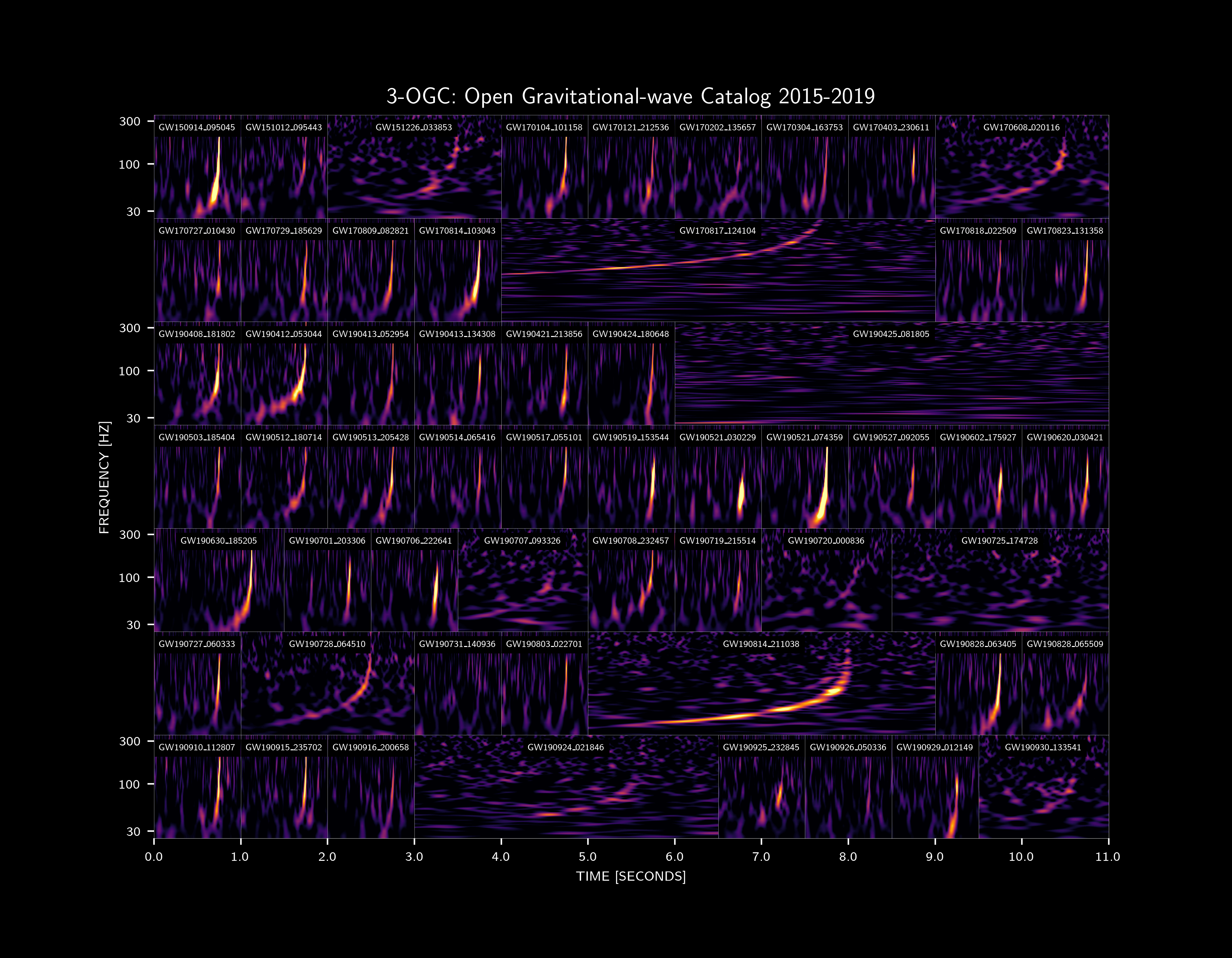GW190521 may be an intermediate mass ratio inspiral
GW190521 is the first confident observation of a binary black hole merger with total mass $M > 100\,\mathrm{M}_{\odot}$. Given the lack of observational constraints at these masses, we analyze GW190521 considering two different priors for the binary's masses: uniform in mass ratio and source-frame total mass, and uniform in source-frame component masses. For the uniform in mass-ratio prior, we find that the component masses are $m_1^{\mathrm{src}} = 168_{-61}^{+15}\,\mathrm{M}_{\odot}$ and $m_2^{\mathrm{src}} = 16_{-3}^{+33}\,\mathrm{M}_{\odot}$. The uniform in component-mass prior yields a bimodal posterior distribution. There is a low-mass-ratio mode ($q<4$) with $m_1^{\mathrm{src}} = 100_{-18}^{+17}\,\mathrm{M}_{\odot}$ and $m_2^{\mathrm{src}} = 57_{-16}^{+17}\,\mathrm{M}_{\odot}$ and a high-mass-ratio mode ($q\geq4$) with $m_1^{\mathrm{src}} = 166_{-35}^{+16}\,\mathrm{M}_{\odot}$ and $m_2^{\mathrm{src}} = 16_{-3}^{+14}\,\mathrm{M}_{\odot}$. Although the two modes have nearly equal posterior probability, the maximum-likelihood parameters are in the high-mass ratio mode, with $m_1^{\rm src} = 171\,M_{\odot}$ and $m_2^{\rm src} = 16\,M_{\odot}$, and a signal-to-noise ratio of $16$. These results are consistent with the proposed "mass gap" produced by pair-instability in supernova. Our results are inconsistent with those published in Abbott et al. (2020b). We find that a combination of the prior used and the constraints applied may have prevented that analysis from sampling the high-mass-ratio mode. An accretion flare in AGN J124942.3+344929 was observed in possible coincidence with GW190521 by the Zwicky Transient Facility (ZTF). We report parameters assuming a common origin; however, the spatial agreement of GW190521 and the EM flare alone does not provide convincing evidence for the association ($\ln\mathcal{B} \gtrsim -4$).
PDF Abstract